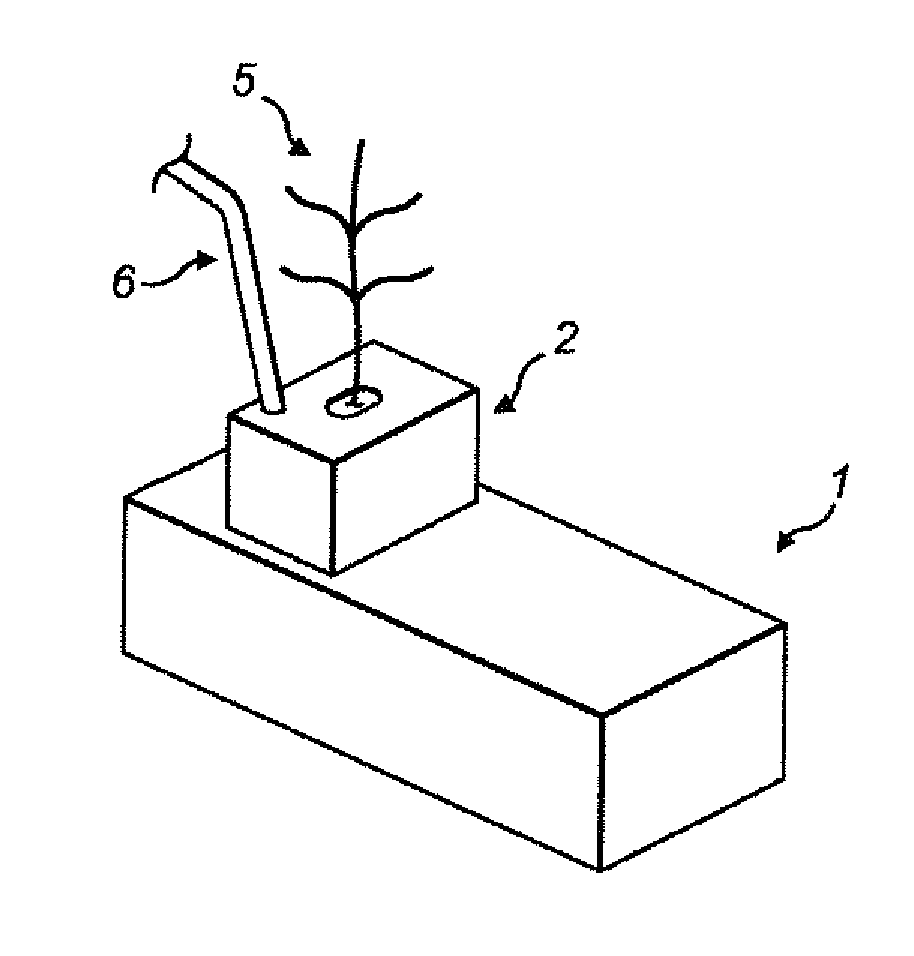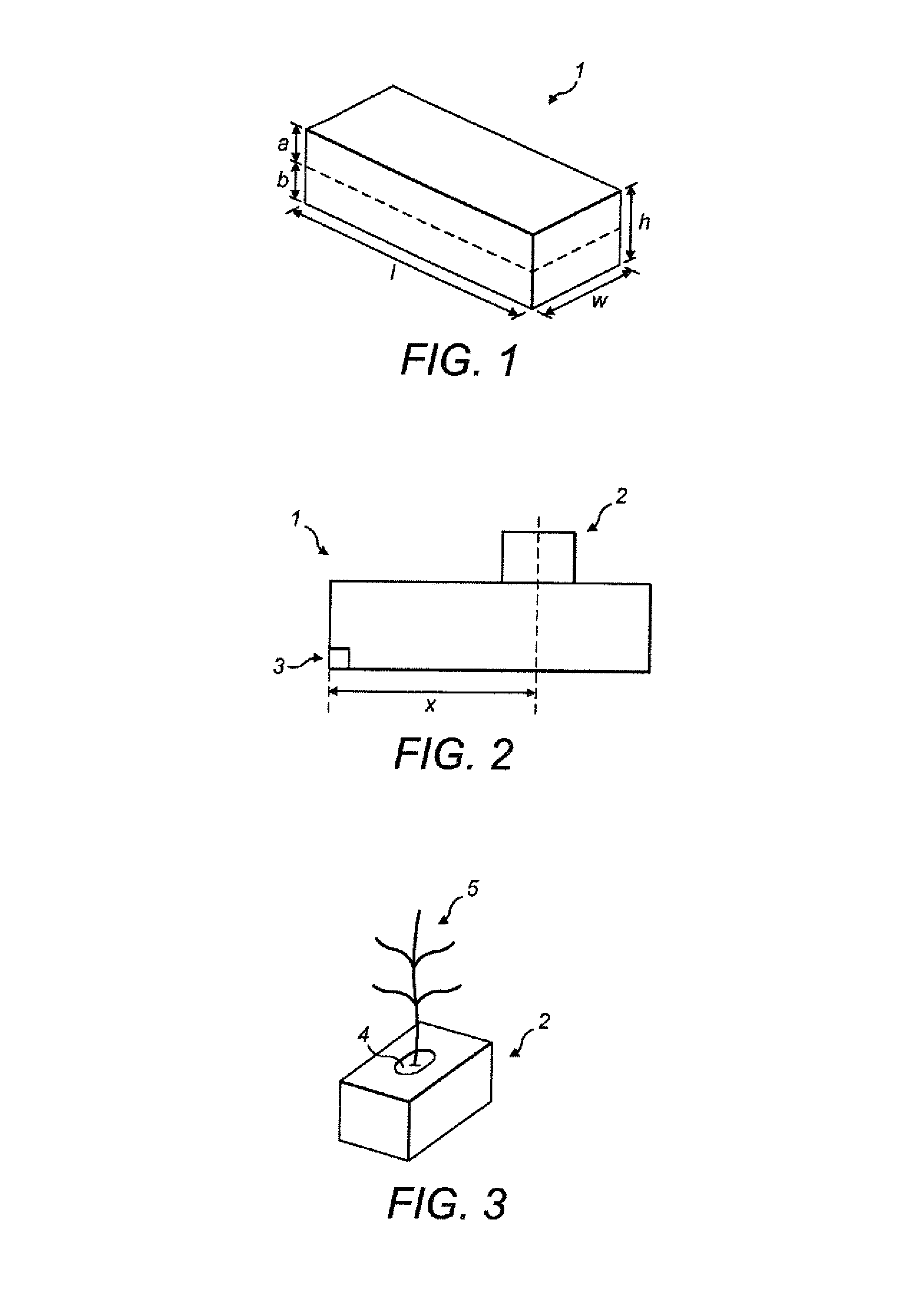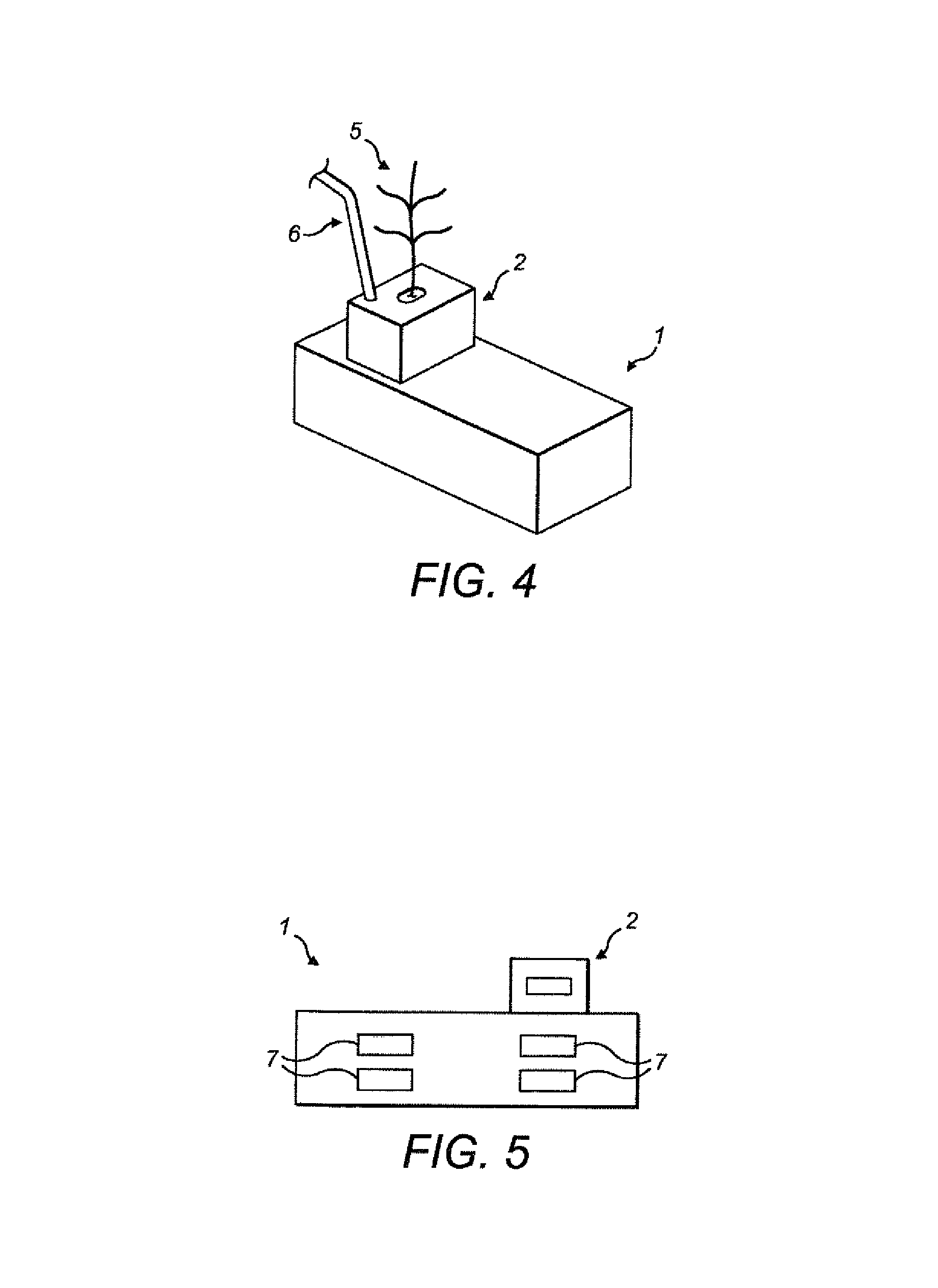Plant growth system
a plant growth and artificial substrate technology, applied in the field of plants growing on artificial substrates, can solve the problems of inability to obtain nutrient-containing waste water, inability to meet the needs of plants, and limitations of existing growing methods and/or substrates, so as to improve the control of water distribution and reduce the flow speed. , the effect of good plant growth properties
- Summary
- Abstract
- Description
- Claims
- Application Information
AI Technical Summary
Benefits of technology
Problems solved by technology
Method used
Image
Examples
Embodiment Construction
[0071]Referring to FIG. 1, there is shown a mineral wool slab 1 having a first layer of a first density disposed above a second layer of a second density. The slab 1 has a volume of 6.8 liters, although more generally the volume may be in the range of 3 liters to 20 liters, more preferably in the range 5 liters to 15 liters, and most preferably in the range 5 to 11 liters. Some embodiments comprise a slab with a volume in the range 6 liters to 8 liters. In other embodiments, the volume may lie in the range of 3 liters to 15 liters, or 3 liters to 10 liters, for example. An alternative preferred embodiment comprises a slab having a volume of 9 liters.
[0072]The height h of the slab 1 of FIG. 1 is 100 mm, although more generally it may lie between 75 mm to 150 mm and more preferably between 85 mm and 125 mm. The width w of the slab 1 is 150 mm, although this may more generally lie in the range of 100 mm to 300 mm, for example. The length l of the slab 1 is 450 mm, although this value m...
PUM
 Login to View More
Login to View More Abstract
Description
Claims
Application Information
 Login to View More
Login to View More - R&D
- Intellectual Property
- Life Sciences
- Materials
- Tech Scout
- Unparalleled Data Quality
- Higher Quality Content
- 60% Fewer Hallucinations
Browse by: Latest US Patents, China's latest patents, Technical Efficacy Thesaurus, Application Domain, Technology Topic, Popular Technical Reports.
© 2025 PatSnap. All rights reserved.Legal|Privacy policy|Modern Slavery Act Transparency Statement|Sitemap|About US| Contact US: help@patsnap.com



